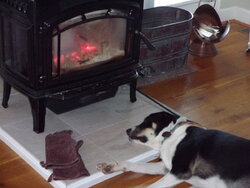In my ongoing saga of getting a wood stove installed...
I thought I had settled on the Castine, but an installer I'd like to work with is a Quadrafire dealer and so is pushing QuadraFire.
How does the Explorer II stack up against the Castine?
I thought I had settled on the Castine, but an installer I'd like to work with is a Quadrafire dealer and so is pushing QuadraFire.
How does the Explorer II stack up against the Castine?


